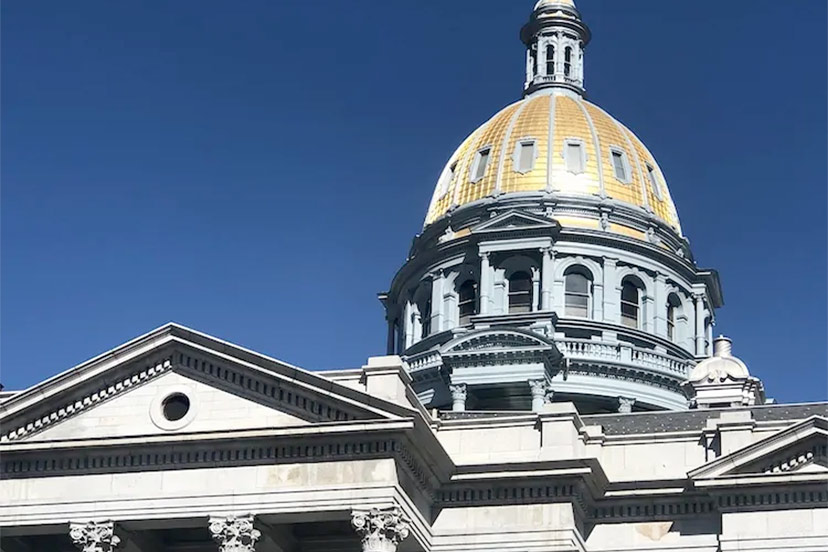This op-ed by Quentin Young appeared on Colorado Newsline on February 15, 2024.
Government transparency rules are only as good as government officials’ commitment to follow them.
Most people who have tried to acquire public records from the federal government under the Freedom of Information Act (FOIA) can attest to what ProPublica once called the “aneurysm-inducing” mockery that many officials make of deadlines and disclosure requirements.
Colorado has several transparency laws, like its own FOIA, known as CORA — the Colorado Open Records Act — and journalists in the state have countless stories about officials who flout its mandates.
Another major source of open government in Colorado is the Transparency Online Project. Also known as the “online checkbook,” the system is a searchable database of the state’s revenues and expenses. Its purpose is to give Coloradans a free and easy-to-access view of how public money is spent and where it’s coming from. It’s their money, after all, and they have a right to see the ledger.
The service in principle is praiseworthy. In practice, it’s had problems.
A recent major flaw was exposed by Scott Franz, an investigative reporter with KUNC. As Franz reported last month, he discovered that more than 16,000 recent entries failed to identify the recipient of state money. Many of the incomplete entries fell under a category of spending called “professional services,” which encompasses a broad range of government outlays.
“I added up the dollar amount on the professional services category alone, and last fiscal year, that was more than $600 million of spending,” Franz told Newsline this week. “This was a significant amount of data that was missing.”
To its credit, the state, in response to Franz’s reporting and blaming a bad software configuration, got to work on a remedy. Many of the entries that caught Franz’s attention have been updated with vendor information. But Franz said his analysis shows that hundreds of other entries remain incomplete.
Franz has previously reported on other problems with this key transparency tool, such as when state officials routinely neglected to follow a statutory requirement that the checkbook be updated at least every five days, and the poor performance of the system before it got an upgrade in 2020.
With transparency comes accountability.
In 2020, some curious transactions in the checkbook prompted Franz to dig further, and he discovered the state had been shelling out thousands to out-of-state travel writers, who then wrote flattering pieces about Colorado, often without revealing to their readers that they had accepted state funds.
Jeffrey Roberts, executive director of the Colorado Freedom of Information Coalition, once used the checkbook to determine that the state spent more than $19 million on a COVID-19 field hospital at the Colorado Convention Center in Denver that was never used.
But the checkbook, like all forms of government transparency, was not created solely for journalists. It’s for the people. In the 2009 bipartisan bill that created the checkbook, the first legislative declaration says, “Taxpayers should be able to easily access the details of the state budget, including how much revenue the state receives and how that revenue is spent.”
And in an essential way, the checkbook is an example of government transparency done right. The perennial headache of CORA is that it requires a person to request a public record that’s stored away somewhere. It takes government staff resources to go collect that record and produce it for the requester, an exercise that takes time and almost always comes with a cost — sometimes a prohibitively high one.
But the data in the checkbook is out in the open at all times.
“Proactively posting public records online is really helpful for everybody. Government doesn’t have to deal with CORA requests. And the public doesn’t have to deal with CORA requests,” Roberts said in an interview this week.
He added that local governments can find similar ways to establish automatic modes of transparency. After the “stop the steal” fallout from the last presidential election, for example, Chuck Broerman, then the El Paso County clerk, created a tool so members of the public can audit elections by viewing images of ballots online.
“That’s transparency, and that’s a way to build trust and show people that, hey, if you want to look at these de-identified ballots, go ahead. And also, you don’t have to do a CORA request for them that could cost hundreds of thousands of dollars,” Roberts said.
The state’s online checkbook still has some kinks, and it shouldn’t take a journalist’s prodding for government officials to care about it.
But the spirit of the system is sound, and custodians of public records at all levels of government should aspire to its promise of transparency.

